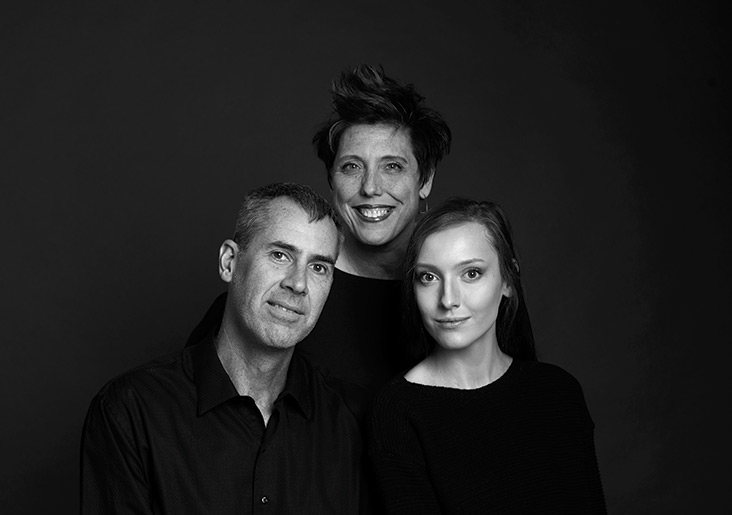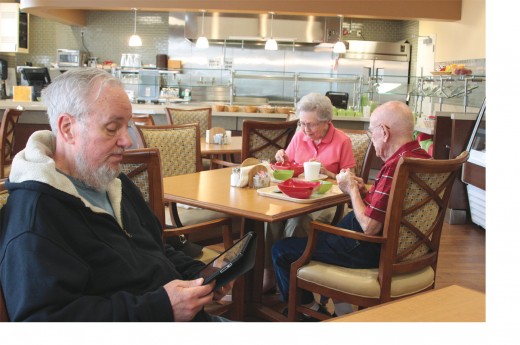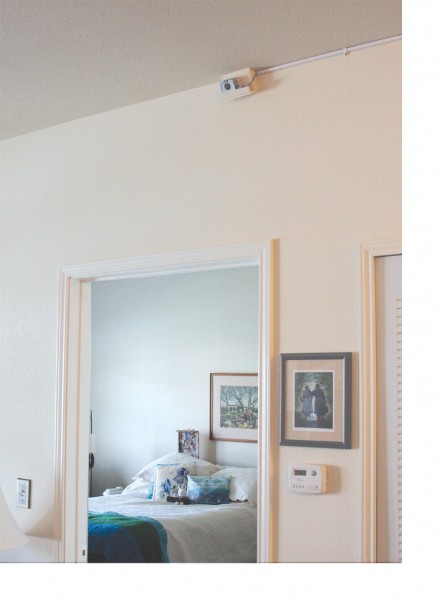Aging in the computer age

 At 70 years old, Joe Barone figures he is one of the youngest fellows in his neighborhood. And there’s a good chance he’s one of the most “plugged in” to the world of computer technology.
At 70 years old, Joe Barone figures he is one of the youngest fellows in his neighborhood. And there’s a good chance he’s one of the most “plugged in” to the world of computer technology.
It’s been about six years now since Barone and his wife, Ann, moved into the Villages at Lenoir Woods. The couple are in good health and are able to live independently, but they have never kidded themselves about the difficulties of aging.
They chose Lenoir Woods continuing-care retirement community for the full range of care it offers. When they’re ready, they’ll move to an apartment for assisted living. And after that, they will transition into a skilled nursing facility.
As they grow older, the Barones like knowing that help is nearby — and that they are surrounded by friends in their own age group. Although Joe isn’t much into games or other group activities offered through Lenoir, he does like being social in his own way, and he can often be found in the main lobby area with iPad in hand.
With free WiFi available, the common area is a good place to connect with others while perusing the Internet. Each day Barone checks the CNN news headlines, has a laugh reading the comics, gets his dose of Civil War trivia and, when the mood strikes, takes a few minutes to beat his own best score at games like Solitaire and Angry Birds.
“Lenoir Woods is always pushing forward as far as technology,” Barone says. “To me that’s very important; and I think as the aging baby boomers begin to move in, it will continue to be so. Right now, a good number of people living here don’t know that much about electronic technology; but that generation will have worked with computers their whole life.”
 Part of everyday life
Part of everyday life
Elliott Bentley, director of resident services for Lenoir Woods, agrees that in the past decade computer science has become a part of everyday life for the elderly community. As that trend continues, the older generation is slowly becoming more confident about using new technology.
Group participation games, such as bowling on the Wii home video game console, have helped put many of the residents at ease about technology, Bentley says. Special workshops have been another confidence booster, teaching seniors how to protect themselves against online fraud and theft.
Electronic reading devices like the Nook and Kindle have become incredibly popular, Bentley says. The fact that they are easy to carry, offer large font capabilities and are simple to operate has won them big accolades from the elderly populations.
“Many of our older residents come from a generation that read all that time,” Bentley says. “So now with the easy, lightweight devices, this technology provides a way for them to get the same enjoyment they’ve had their whole life.”
Aging in place
Designed by the University of Missouri Sinclair School of Nursing and Americare, TigerPlace independent living facility operates around the central focus of “aging in place.” Residents move in while still able to live independently, where they are able to relax in the knowledge that they will be permanent residents, even as their need for nursing attention increases.
As part of its mission, TigerPlace uses cutting-edge technology to enhance independence through the end of life. In doing that, research teams from MU’s schools of nursing, engineering, computer science, social work, health informatics and medicine come together to share new information and ideas on the needs of the growing older adult population.
Like Lenoir Woods, the staff and residents at TigerPlace have their fun, too. Family members and residents enjoy WiFi availability, games on the Wii, and all sorts of electronic puzzles and games to keep senior minds sharp. But as the staff and residents at both TigerPlace and Lenoir Woods will attest, growing old isn’t all fun and games.
 Electronic medical records
Electronic medical records
At The Neighborhoods at TigerPlace, the residents’ electronic medical records can be found on hallway monitors, so with each staff change, the new care provider has easy access to the most current information. Not only does it eliminate digging through piles of paper, but it helps provides staff members with a common understanding of that patient’s medical history.
Computer technology has played an enormous role in streamlining the process of patient charting for both facilities — a process that before had resulted in piles of paperwork While most hospitals across the United States made the move to electronic medical records years ago, many health care facilities for the elderly have only recently begun to join that trend. The state goal is that all Missouri nursing homes be completely moved over to electronic charting by 2014.
“In short, electronic charting helps provide better continuity of care,” explains Katy Musterman, TigerPlace manager of nursing service and care coordinator. “Without this technology, some of the small, yet very important changes are easy to overlook. Having those alerts can help us detect early illness, which helps us keep residents out of hospitals and doctors’ offices.”
Staff at both TigerPlace and Lenoir say they look forward to the day that elderly care facilities and hospitals are linked electronically, with information available through a common database. That flow of up-to-date information is another way to improve the quality of care residents receive.
“Not only does electronic charting mean better record-keeping, but also it will often raise flags about changes in the resident’s condition,” says Dave Piehl, administrator of information systems for Lenoir Woods/Lutheran Senior Services. “Sometimes, with paperwork, you might miss a change in weight or variation in blood pressure; but this system picks up on all those factors.”
Sensor data
Sensory monitoring at TigerPlace has helped the research teams gather valuable information as well. Small, unobtrusive devices are placed throughout the residents’ apartments — above doorways and in the bathroom and shower — to alert staff when falls happen or when the risk of falls increases. Hidden bed sensors monitor restlessness, pulse and breathing patterns.
The motion sensor data collected from TigerPlace apartments is used to create an electronic map showing patients’ movement patterns. By creating baseline patterns, the data offers notification about change in activity. For example, if a resident who eats meals and sleeps on a regular schedule becomes depressed or has other health issues, the sensor system would alert staff.
“Early detection is key in keeping our residents independent, healthy and strong as possible,” Musterman says. “The idea is to provide staff with the necessary data to detect early signs of illness or decline before they progress into larger complications. We want to prevent falls before they happen.”
Lenoir Woods will begin using similar sensor technology upon completion of its new assisted living center, which staff members expect will open this year. In its system, residents will wear pendants in addition to having various inhouse sensors.
With the pendants, residents can call for help from any location. An inaudible signal will be sent to that resident’s assigned caregiver, alerting him or her via a vibrating pager.
“We expect the new system will be beneficial in a lot of ways,” Piehl says. “For one, the silent prompt will reduce a lot of beeping and buzzing that can be irritating and even problematic for both staff and residents. We expect it will also alleviate a lot of anxiety for residents, knowing they can call for help anytime, anywhere.”


